You are here
The Pfeifferhorn is a steep, triangular 11,329-foot peak that looks like a mountain that a child might draw, and it is an imposing sight from any angle. The easiest route up is fairly strenuous hike, gaining 3,700 feet in 4.5 miles. The final section offers third-class scrambling with exposure on a narrow, traversing ridge strewn with massive granite boulders, followed by a steep hike up the slopes of the summit pyramid (Class 2). Here, expect to find snow well into summer. The steep summit snowfield makes for an exhilarating climb, but it certainly requires an ice ax and the skills to use it.
Until 2013, this peak dividing Little Cottonwood Canyon and Dry Creek was labeled “Little Matterhorn” on USGS topographic maps. The Pfeifferhorn is the more widely-known name for that peak, and newer maps will fix the discrepancy. The name was changed in 1939 to honor Charles “Chick” Pfeiffer, one of the founding members of the Wasatch Mountain Club. As president of the club, he was instrumental in promoting Utah skiing during the mid-1930s. When he was found dead in his Salt Lake City shoe shop, he was still wearing his ski clothes.
Start at the White Pine Trailhead, where a short, paved section of trail leads to a substantial wooden footbridge. Crossing the stream, the trail turns sharply right and begins a steady, gradual ascent to the southwest on an old jeep road. One mile from the trailhead the trail meets the stream that flows out of White Pine Canyon. To continue into Red Pine Canyon and beyond, take the footbridge just upstream from the trail junction and signage. Passing a sign, enter the Lone Peak Wilderness and watch for an overlook half a mile from the stream crossing. This overlook at about 8,200 feet offers magnificent views down Little Cottonwood Canyon and into the Salt Lake Valley.
Another mile of hiking from the overlook gains 900 feet of elevation and brings you to the junction with the Maybird Gulch Trail. Instead of crossing the footbridge, turn left and head up Red Pine Canyon, passing a large mine dump and following the path through the trees on the east side of the drainage. This trail brings you to Red Pine Lake at 9,640 feet. A healthy population of cutthroat trout makes this lake attractive for fishing. If you are planning to hike the Pfeifferhorn as an overnight, you should plan to camp here, as this area is the only location with flat campsite spaces. Bear in mind that you should camp at least 200 feet from water; the first sites you see (which are used regularly) are too close to the lake. Check the trees around the upper lake for other sites.
Looking south from the lower Red Pine Lake, the upper lake is hidden just beyond a wooded ridge. Notice the spur ridge continuing up and to the right as it rises in a southwest direction toward the Alpine Ridge that separates Little Cottonwood from American Fork Canyon. The route will follow this ridge on a faint but visible track in dry conditions. To get to it, follow the trail around the east side of Red Pine Lake. At the southeast corner of the lake a distinctive large boulder marks the inlet of the lake, and the trail continues through the trees and up the spur ridge from here.
If you are climbing in the spring, an ice ax and crampons will be necessary to continue further, and a cornice may be present at the top, where the spur ridge steepens. Now head west, passing on the south side of the peak between Red Pine and Maybird. This 10,987-foot peak is known as Little Pfeifferhorn. Having gained the top of Alpine Ridge, get a look at where you are heading: Pfeifferhorn looms above you to the west and may appear decidedly unclimbable. Fortunately, the east ridge is not quite as steep as it looks from here. Traverse past a second minor summit, then follow the narrow ridge to the base of the summit pyramid. Work your way over and around the large blocks and boulders to reach the end of the ridge. The scrambling here is third class with some exposure, but nothing that should really feel like rock climbing to experienced climbers. Large blocks halfway across the ridge present a momentary obstacle, but they can be bypassed by down-climbing to the right (north) side about 10 feet.
Upon reaching the end of ridge, you will be faced with either a large snowfield or steep, Class 2 hiking up a rough trail that follows a minor gully. If you are climbing snow, the direct route stays just to the left of the exposed rock rib. The exposed scrambling and steep snow climbing make this route a real adventure and a good introduction to mountaineering for hikers looking to expand their skills.
From the 11,329-foot summit of Pfeifferhorn, enjoy views of Hogum Cirque and Maybird Gulch to the north, Lone Peak to the west, and American Fork Canyon to the south. The north ridge is a technical rock climb that is recommended as a winter climb; while snow complicates travel and adds avalanche danger, the north ridge has a great deal of loose rock that snow and ice helps to hold in place. Have a look down the Northwest Couloir as well: this steep chute is a destination for some hardy backcountry skiers, but not one to be taken lightly. The chute can be icy, and it narrows to a steep choke-point that requires a rappel with your skis on. Moderate hiking down the west ridge continues the Beatout Hike to Bells Canyon.
This hike is a fine opportunity to see some of the typical animals and plants of high alpine terrain. Above Red Pine Lake, watch for mountain goats and pikas. In the summer and fall, notice the krummholz on the high ridges. This mat-like, low-growing woody vegetation is a variant growth form of the spruce and fir trees that grow upright in less exposed, lower elevation locations.
The Pfeifferhorn can be climbed year-round, but most hikers choose spring through fall. For dry conditions, August through early October is the best bet, but it varies depending on snowpack. Expect the hike to take about 9 hours under dry conditions. Spring snow climbers can usually expect stable, safe conditions in June depending on the season’s snowpack. Winter ascents are all-day mountaineering adventures, requiring not only an ice ax and crampons, but snowshoes or skis for the approach to Red Pine Lake and careful assessment of avalanche hazards.

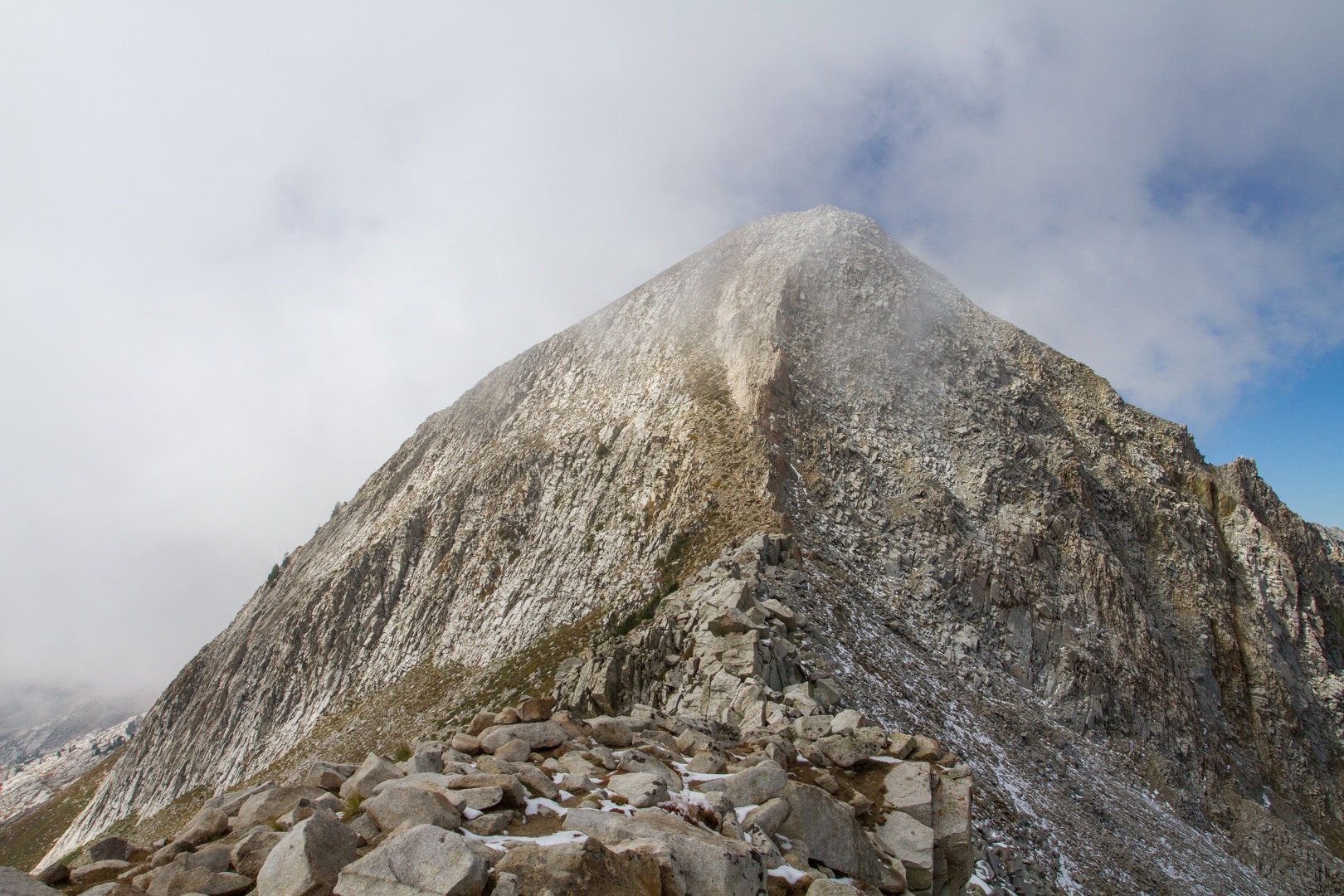
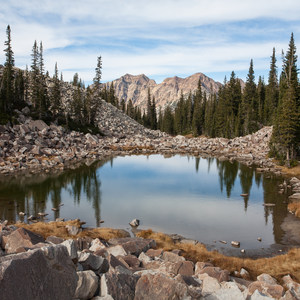

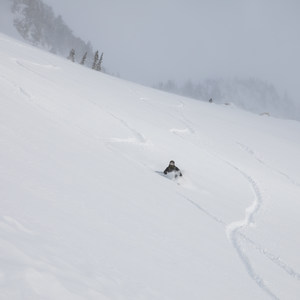
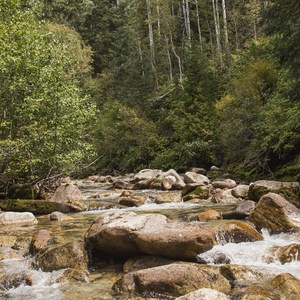
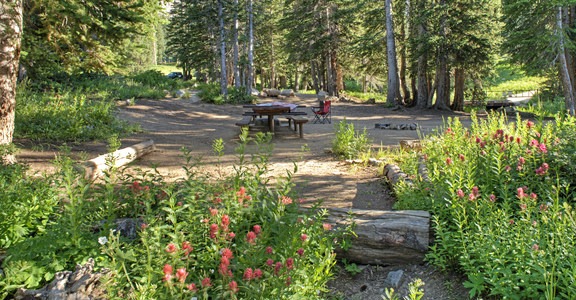
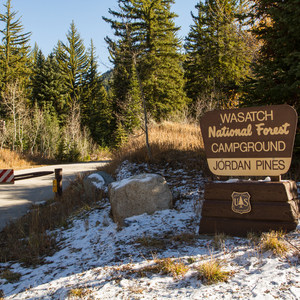



Comments
Sign In and share them.